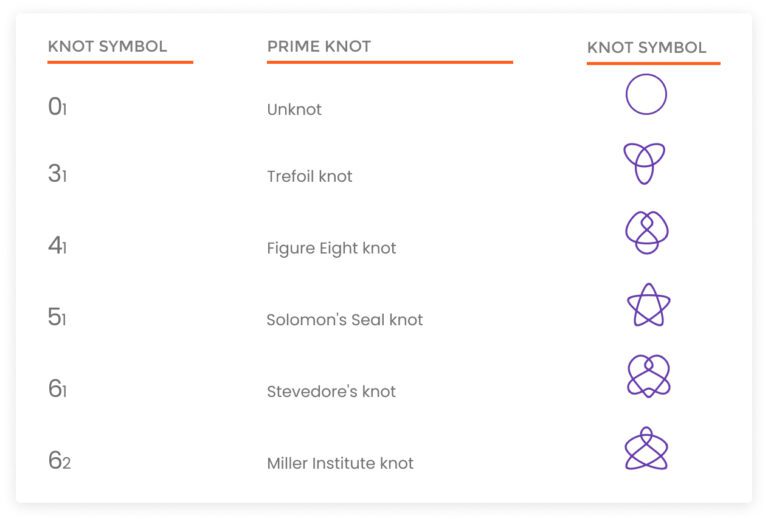We all know what a knot is. They’re what keep our shoes on our feet, boats from floating away from the dock, and mountain climbers from falling. However, these are not the same knots that mathematicians would reference in knot theory. In a mathematical knot, the free ends of the rope must be attached together to form a completely closed loop. When it is impossible to untangle a knot, it turns into a regular circle which is oftentimes called an “unknot”.
A subtopic in topology, knot theory first emerged in an effort to understand the fundamentals of the universe. A knot is essentially a closed curve embedded in a 3D space; imagine tying a rope into a loop with no loose ends. Knot theory is a fascinating topic in mathematics with deep-rooted connections to other subjects, offering both theoretical and practical applications in the world.
History
Knots have appeared in various ways in Chinese artwork going back several centuries. The endless knot is featured in Tibetan Buddhism, and the Borromean rings are repeatedly shown in different cultures. Knot theory was first introduced in 1771 by Alexandre-Théophile Vandermonde. He noted the significance of topology in his discussion regarding the properties of knots in relation to the geometry of position.
In the 18th century, studies led to Peter Guthrie Tait’s creation of the first knot tables. In 1885, the Scottish mathematician and physicist showed fellow mathematician Sir William Thomson (later to become Lord Kelvin) his device that generated smoke rings. Kelvin was fascinated by the amazing shapes of the rings, their stability and their relationships. Tait’s table of knots came to be known as the Tait conjectures which motivated the early theorists of knot theory. Kelvin did develop a theory which theorized that atoms might consist of knotted vortex tubes of the ether, but this theory was later rejected.
In the early 20th century, Max Dehn, J.W. Alexander and others studied knots from the viewpoint of the knot group and functions of the homology theory, like the Alexander polynomial. This would be the main focus of knot theory until a few breakthroughs transform the topic. In the late 1970s, American mathematician William Thurston introduced hyperbolic geometry into knot theory through the hyperbolization theorem. Deep connections were found between knot theory and mathematical techniques in quantum field theory and statistical mechanics through research by Vaughan Jones, Edward Witten, Maxim Kontsevich, and others.
In the last several decades of the 20th century, scientists moved on to study physical knots in order to understand knotting occurrences in DNA. Knot theory can be used to determine if a molecule is asymmetric in a way in which the structure and its mirror image are not identical. Tangles (strings with both ends fixed in place) have also been used to study DNA. Knot theory is also crucial in constructing quantum computers.
Theory
Topology is the study of flexible shapes and since knots are flexible like in string, mathematicians see knot theory as a subtopic in topology. When it is impossible to untangle a knot, it becomes a regular circle, which is called an “unknot”. But usually, untangling a knot is nearly impossible. Knots can also combine together to create new knots. The Borromean rings (appearing on the coat of arms for the Italian House of Borromeo) are an example of combining knots.
In 1949, Horst Schubert proved that every knot is either a prime knot or can be deconstructed into prime knots. A knot that is not prime is called a composite knot, and it is often possible to combine prime knots to create composite knots. Each prime knot has its own name and symbol as seen below. The terminology used below is taken from the world of numbers.

Kelvin and Tait were not the first to view knots in a mathematical sense; however, Tait was the first scholar to work on the classification and tabulation of all possible knots. Through many years of work, he found and classified all prime knots. When projected onto a plane, these prime knots have a maximum of seven crossings. Later on, Tait joined forces with Rev. Thomas Kirkman and Charles Little to classify all prime knots with up to 10 crossings without missing any knots. Small knots are “alternating” which means that their crossings follow a consistent over-under-over-under pattern.
At Online Math Center
There are many, many more notations and invariants of knot theory. Through centuries of research, the topic becomes developed each time a mathematician dives into the theory. Understanding the basics of topics like knot theory can be beneficial in areas outside of math like biology, chemistry, and mathematical physics.
Contact OMC now to ensure that your child understands mathematical topics such as knot theory and can apply them to the real-world with ease. At OMC, students can improve their core skills through classes and tutoring. With two difficulty levels every grade, OMC strives to progress each student as far as possible in mathematics – and beyond.